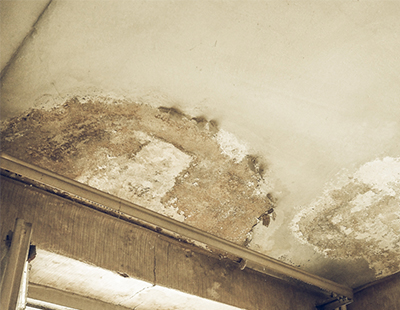All property investments require maintenance and one of the most common issues is damp; a problem that is at its worst in this coldest, wettest part of the year.
At SDL Property Auctions we speak to many investors who agree with us that damp is not an issue to be ignored or postponed as it has implications for the property owner, the property and any tenants.
Left unchecked, it can escalate into a huge problem that becomes more expensive to put right and could potentially affect the fabric of the building. What’s more, damp can lead to mould which has health implications for tenants as it can aggravate asthma and cause allergic reactions and respiratory infections.
Because of this, it is classed as a hazard under the Housing Health and Safety Rating System (HHSRS) and, if landlords fail to address issues with damp, tenants can report them to the local authority. Under the Homes (Fitness for Human Habitation) Act 2018, tenants can also take landlords to court to force the repairs, as well as sue for compensation.
Damp can of course be resolved in a property but, as with all maintenance issues, it is easier to fix if caught early.
Tell-tale signs to look for inside a property include damp patches on walls or ceilings, condensation on windows, patches of mould in cool corners and behind furniture – plus, of course, that distinctive smell.
Outside the property, signs that damp could be present include white residue on external walls, broken gutters, leaking drain pipes and cracks around windows.
The first step to resolving any of these issues is to identify the type of damp affecting the property. The word damp is used as a generic term for several different problems with different causes and solutions, and a property can be affected by more than one of these:
Condensation: If there are damp or mouldy patches on ceilings and in corners of rooms, this can be caused by condensation, the most common problem which falls under the umbrella term of damp. Condensation is caused by excess moisture in the air which then lands on a cold surface. It can be a result of poor ventilation or a lack of heating and insulation.
Tenants can contribute to this problem by failing to ventilate kitchens and bathrooms but to prevent condensation from forming they need to be able to heat and ventilate the property adequately. The problem may be eased by providing better heating, installing extractor fans (or upgrading existing ones) and providing somewhere for the tenant to dry clothes safely. It is always wise to work together with the tenant to put things right, not least because a happy tenant will stay longer and take better care of the property.
Penetrating damp: This is usually caused by water entering the property from outside, such as from a gutter leak or badly sealed window. Moisture leaches through the walls or cavity to cause a damp patch inside the property. Unfortunately, life is never straightforward and this damp patch may not always correspond with the external cause. These maintenance issues are the responsibility of the property owner and can be flagged up by tenants or on regular property inspections by the landlord or landlord’s agent.
Rising damp: Moisture rises from the ground to cause rising damp which can be seen on the lower part of the walls inside the property. This happens when a damp proof course fails or, if the house is old, if no damp proof course has been installed. This is a maintenance issue which should be addressed by the property owner before any tenants move in.
While all of these issues can be resolved, they require professional diagnosis and treatment by a specialist. Cutting corners when dealing with damp can lead to long-term issues which keep returning every winter and cost more over the long term.
Some properties are so beset by damp that the owner may decide that it is not worth the time and resources required to put it right. In some cases, the wisest business decision can be to realise the asset and at SDL Property Auctions we believe the best way to sell a property with damp is by auction.
This allows the property to reach a wide pool of investors who are willing to take on the challenge of a property by selling to another investor with the time, resources and maybe even the expertise to resolve the problems. As SDL Property Auctions, we have a wide network of buyers actively seeking out investments that allow them to add value.
That is not to say we only sell problem properties. We sell all types of property in our Timed Auctions and live-streamed Auction Events. These include well-presented houses and flats which are ready to let to tenants straight away. Properties like these are ideal for investors who have released capital and want to reinvest in a property which allows them to hit the ground running.
*Andrew Parker is the Managing Director and Auctioneer at SDL Property Auctions









.png)










Join the conversation
Be the first to comment (please use the comment box below)
Please login to comment